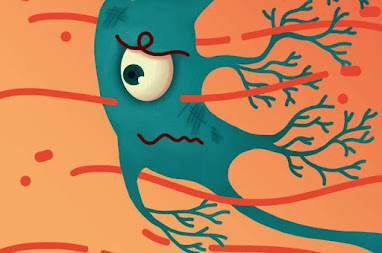Study hints at the potentially crucial role of shear stress in the activation of pain sensing neurons
Feelings of pain and discomfort are crucial to the survival and evolution of animals, as they help to detect injuries or existential threats and pinpoint their location in the body. Pain signals are produced by nociceptors, sensory neurons that respond to damage to the body and send "threat" signals to the spinal cord.
Listen this article in our podcast.
Nociceptors (i.e., neurons sensing pain) are essentially bare nerve endings that can be found in all parts of the body, including the skin, muscles, bones and viscera. While many neuroscience studies have investigated their structure and function, the mechanisms underpinning their activation remain poorly understood.
Researchers at University of Massachusetts Medical School and Worcester Polytechnic Institute have recently set out to better understand these mechanisms by conducting experiments on fruit fly larvae. Their findings, published in Neuron, suggest that these neurons specifically respond to shear stress (i.e., stress caused by two forces of similar strength acting on opposite sides of a body and moving in opposite directions), but do not respond to stretch.
"The physiological relevant forces involved in activation of nociceptors are still unclear," Yang Xiang, the senior author of the paper, told MedicalXpress. "The prevailing view in our field is that nociceptors should be activated by stretch of cell membrane. However, when examining nociceptors in Drosophila (i.e., fruit flies), we found surprisingly that stretch did not activate nociceptors."
The key goal of the recent work by Xiang and his colleagues was to identify the specific forces that lead to the activation of these pain sensing neurons and elucidate the underlying transduction mechanisms. To do this, the researchers first conducted behavioral experiments, where they poked a fruit fly larva using a calibrated fishing line.
"In the absence of stimulation, larvae tend to move forward with frequent changing of direction," Xiang explained. "However, when we poked a larva, it stopped moving and displayed a 360-degree body rotation. This rolling was interpreted as nocifensive behavior (i.e., animal behavior aimed at withdrawing from danger). The strength of response was measured as a percentage of animals that rolled in response to poking."
Using computer modeling, the team found that poking a fruit fly larva could elicit two different kinds of forces, stretch and shear stress to stimulate nociceptors. In the following calcium imaging experiments to explore which forces are responsible for nociceptor activation, the researchers stretched the larvae's nociceptors or apply a shear force to them. They found that the larvae's nociceptors were activated by shear stress, but not by stretch.
They were also able to identify the specific type of ion channel that is found in nociceptors and is activated by shear stress, called transient receptor potential A1 (TrpA1). Interestingly, shear stress appeared to be able to activate TrpA1 in a small patch of cell membrane devoid of cellular environment, providing evidence of TrpA1 as a molecular sensor of shear stress. They further show the effect of shear stress was through modulation of membrane's fluidity.
"Our study has two notable findings," Xiang said. "First, we showed that shear stress could be a physiologically relevant force that is critical for activation of nociceptors. Second, we provided evidence that TrpA1 is a shear stress sensor and this property is conserved for TrpA1 derived from Drosophila, mice and humans."
Most known mechanosensitive ion channels in the body of animals are known to be sensitive to stretching. The recent work by this team of researchers shows that TrpA1 is not.
This key finding suggests that mechanical forces other than stretching could be involved in the sensing of pain. In the future, it could pave the way for further studies into TrpA1 and other nociceptors, potentially leading to new and important discoveries.
"During our investigation, we noted that TrpA1 is highly expressed in the Drosophila gastrointestinal tract," Xiang added. "Here, shear stress is a natural mechanical force associated with food passing and contraction of gastrointestinal tract. We are currently investigating how shear stress sensing of TrpA1 could contribute to gut tissue growth and function."
For more such news & interesting articles or how can it affect in your life subscribe to our newsletter


Comments
Post a Comment